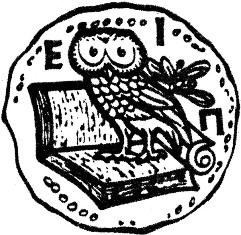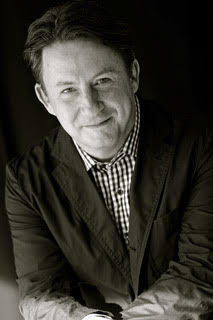Related Research Articles

Joseph Kosuth is a Hungarian-American conceptual artist, who lives in New York and Venice, after having resided in various cities in Europe, including London, Ghent and Rome.

In the art world, a Biennale, Italian for "biennial" or "every other year", is a large-scale international contemporary art exhibition. The term was popularised by the Venice Biennale, which was first held in 1895, but the concept of such a large scale, and intentionally international event goes back to at least the 1851 Great Exhibition in London.

Shirin Neshat is an Iranian photographer and visual artist who lives in New York City, known primarily for her work in film, video and photography. Her artwork centers on the contrasts between Islam and the West, femininity and masculinity, public life and private life, antiquity and modernity, and bridging the spaces between these subjects.
Diller Scofidio + Renfro is an American interdisciplinary design studio that integrates architecture, the visual arts, and the performing arts. Based in New York City, Diller Scofidio + Renfro is led by four partners – Elizabeth Diller, Ricardo Scofidio, Charles Renfro, and Benjamin Gilmartin – who work with a staff of architects, artists, designers, and researchers.

Albanian art refers to all artistic expressions and artworks in Albania or produced by Albanians. The country's art is either work of arts produced by its people and influenced by its culture and traditions. It has preserved its original elements and traditions despite its long and eventful history around the time when Albania was populated to Illyrians and Ancient Greeks and subsequently conquered by Romans, Byzantines, Venetians and Ottomans.

Henryk Stażewski was a Polish painter, visual artist and writer. Stażewski has been described as the "father of the Polish avant-garde" and is considered a pivotal figure in the history of constructivism and geometric abstraction in Central and Eastern Europe. His career spanned seven decades and he was one of the few prominent Polish artists of the interwar period who remained active and gained further international recognition in the second half of the 20th century.

The European Union National Institutes for Culture (EUNIC) is a network of European national institutes of culture and national bodies engaged in cultural and related activities beyond their national borders. EUNIC brings together organizations from all 27 EU member states and adds value through its global network of clusters. By pooling together the resources and expertise of its members and carrying out joint work on common areas of interest, EUNIC is a recognized partner of the European Union and its stakeholders in defining and implementing European policy on culture inside and outside the EU.

The Hellenic Foundation for Culture, founded in 1992, is a cultural and educational organization, based in Athens, which aims to promote Greek language and Greek culture. Professor Ioannis Georgakis, was the prime mover, founder and first President of the Hellenic Foundation for Culture and he had the vision of establishing an institution for Greek culture abroad.

Nnenna Okore is an Australian-born Nigerian artist who lives and works in Chicago at North Park University, Chicago. Her largely abstract sculptural forms are inspired by richly textured forms and colours within the natural environment. Okore's work frequently uses flotsam or discarded objects to create intricate sculptures and installations through repetitive and labor-intensive processes. She learnt some of her intricate methods, including weaving, sewing, rolling, twisting and dyeing, by watching local Nigerians perform daily domestic tasks. In her more recent works, Okore uses plant-based materials to create large bioplastic art forms and installations. Her work has been shown in galleries and museums within and outside of the United States. She has won several international awards, including a Fulbright Scholar Award in 2012. and the Australian Creative Victoria Award in 2021.
The Finnish Institute in the UK and Ireland, formerly the Finnish Institute in London is a non-profit, private foundation, funded principally by the Finnish Ministry of Education and Culture. It is part of the international network of 17 Finnish Cultural and Academic Institutes It operates in the United Kingdom, the Republic of Ireland and Finland. The Institute runs two programmes: Arts and Society. The Institute belongs to the Team Finland network that supports Finnish diplomacy, business and culture abroad. The institute is a member of EUNIC London, the network of EU member state cultural institutes.

András Szántó advises museums, foundations, educational institutions, and leading brands worldwide on cultural strategy. He has directed the National Arts Journalism Program at Columbia University and has overseen the Global Museum Leaders Colloquium at the Metropolitan Museum of Art.
The Center for Traditional Music and Dance (CTMD) is a leading folk/traditional arts organization based in New York City. Originally established as the Balkan Arts Center in 1968, CTMD assists the city's ethnic and immigrant communities in maintaining their traditions and cultural heritage. CTMD has developed a range of programs that emphasize research, documentation, collaboration, presentation, and education to help advance its mission of cultural equity. Over the past five decades, CTMD's programs have led to the creation of nationally renowned ensembles, folk arts festivals, and community-based cultural organizations. CTMD provides the public with a full calendar of events designed to showcase and promote the diversity of New York City's performing arts traditions.

The Embassy of Slovenia in Washington, D.C. is the Republic of Slovenia's diplomatic mission to the United States. The embassy in Washington is also responsible for representing Slovenia in Mexico. The chancery is located just off Embassy Row at 2410 California Street NW in the Kalorama neighborhood. Consular assistance is also provided by Slovenia's network of consulates in the U.S. and Mexico.

Adela Demetja is an Albanian art curator.
Defne Ayas is a curator, lecturer, and editor in the field of contemporary art and its institutions. Ayas directed, cofounded, curated, and advised several art institutes, initiatives, and exhibition platforms across the globe, including in the United States, Netherlands, China and Hong Kong, South Korea, Russia, Lithuania, and Italy. Exploring art's role within social and political processes, Ayas is best known for conceiving innovative exhibition and biennale formats within diverse geographies, in each instance composing interdisciplinary frameworks that provide historical anchoring and engagement with local conditions. Working between Berlin and New York since 2018, she currently serves as Senior Program Advisor and Curator at Large at Performa. Until June 2021, Ayas was also the Artistic Director of the 2021 Gwangju Biennale, together with Natasha Ginwala.
Julieta Aranda is a conceptual artist that lives and works in Berlin and New York City. She received a BFA in filmmaking from the School of Visual Arts (2001) and an MFA from Columbia University (2006), both in New York. Her explorations span installation, video, and print media, with a special interest in the creation and manipulation of artistic exchange and the subversion of traditional notions of commerce through art making.
Anne Barlow is a curator and director in the field of international contemporary art, and is currently Director of Tate St Ives, Art Fund Museum of the Year 2018. There she directs and oversees the artistic vision and programme, including temporary exhibitions, collection displays, artist residencies, new commissions, and a learning and research programme. At Tate St Ives, Barlow has curated solo exhibitions of work by artists including: Outi Pieski (2024); Hera Büyüktaşcıyan (2023); Burçak Bingöl (2022); Prabhakar Pachpute (2022); Thảo Nguyên Phan (2022); Petrit Halilaj (2021); Haegue Yang (2020); Otobong Nkanga (2019); Huguette Caland (2019); Amie Siegel (2018) and Rana Begum (2018). She was also co-curator of "Naum Gabo: Constructions for Real Life" (2020) and collaborating curator with Castello di Rivoli, Turin for Anna Boghiguian at Tate St Ives (2019).
Suzanne Anker is an American visual artist and theorist. Considered a pioneer in Bio Art., she has been working on the relationship of art and the biological sciences for more than twenty five years. Her practice investigates the ways in which nature is being altered in the 21st century. Concerned with genetics, climate change, species extinction and toxic degradation, her work calls attention to the beauty of life and the "necessity for enlightened thinking about nature's 'tangled bank'." Anker frequently assembles with "pre-defined and found materials" botanical specimens, medical museum artifacts, laboratory apparatus, microscopic images and geological specimens.
Zohra Opoku is a German-born Ghanaian textile artist and photographer. She used textile patterns to inform her photographed portraits. She was born in Altdöbern, Germany, and she lives in Accra. She is known for her installations, performances, textile designs, photographs and videos.

4A Centre for Contemporary Asian Art, formerly known as Gallery 4A, 4A Galleries, Asia-Australia Arts Centre and also known simply as 4A, is an Australian independent not-for-profit organisation based in the Haymarket area of Sydney, New South Wales. It commissions, exhibits, documents and researches Asian and Asian-Australian contemporary art in Australia, and promotes Australian talent in Asia, promoting and maintaining cultural connections between the nation and the region. The gallery and the associated Performance 4A were founded by the Asian Australian Artists Association Inc. in 1997.
References
- ↑ "Institute's homepage". albanianinstitute.org/.
- ↑ "Albanian Institute at the London Design Biennale".
- ↑ "London Design Biennale Medal". 23 April 2019.
- ↑ "Ideas City by NEW Museum". Ideas City.
- ↑ "Panorama Europe at MoMI". Museum of Moving Image.
- ↑ "Artsy".
- ↑ "EUNIC NY Member". new-york.eunic-online.eu/?q=eunic-cluster-members.
- ↑ "EUNIC NY Mission".
- ↑ "Artsy".
- ↑ "About". Albanian Institute. Retrieved 8 July 2014.